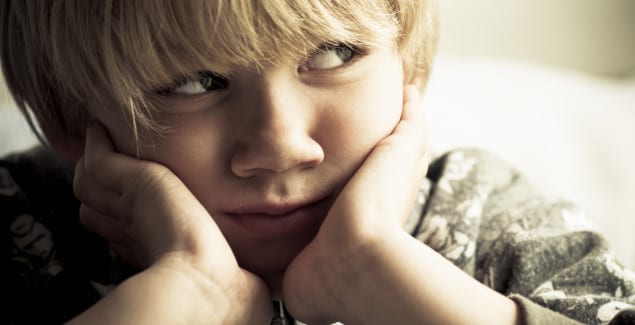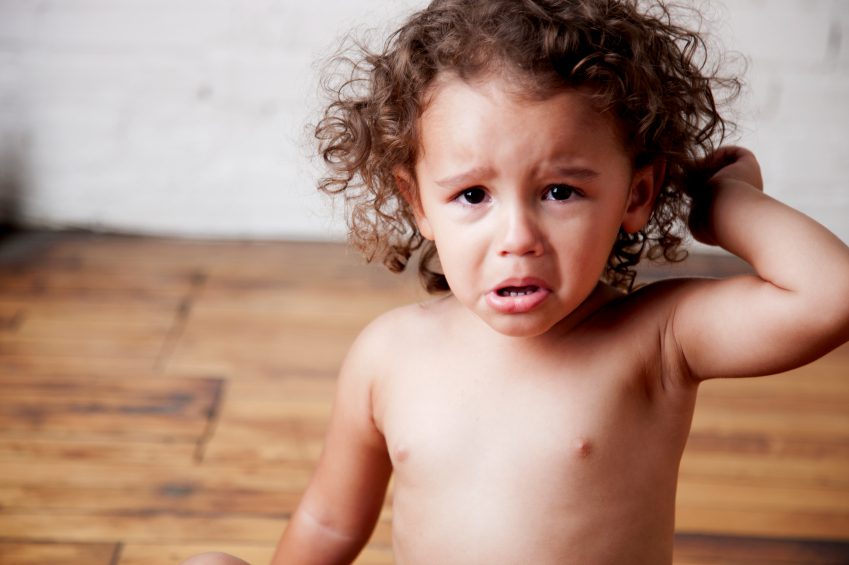Treating Specific Phobias in Kids

Posted in: Grade School, Multimedia, Podcast, Teenagers, You & Your Family
Topics: Mental Illness + Psychiatric Disorders
It was the last semester of medical school, and Philadelphia couldn’t have been nicer—even West Philly.
My wife and daughter, then almost five years old, were walking around town, and at one point let our daughter run ahead over a concrete bridge. Most kids have their falls, so when she tumbled, we weren’t surprised. But what happened next was awful: she stood up briefly, then, just like that, went down for the count.
Rushing over, we found her limp on the ground. Fearing the worst, I ran through the ABCs of emergencies that we had learned in school; that is, I checked her Airway, Breathing, and Cardiac (pulse) status. All were fine. Suddenly, her eyes fluttered open—until she fainted once more upon seeing her scraped, bloody knee. Speaking with her pediatrician after the fact, I was told not to worry; she had a common childhood phobia related to blood, injection, and injury.
Her revulsion toward blood, her fear for years of going to the doctor, getting shots…it all made perfect sense.
All of us have fears. It’s a basic part of our wiring. Humans are built for survival—hence the fight, flight, or freeze response. And it’s our fear that tips us off.
It’s normal for kids to be afraid of the dark, of monsters, of burglars, of separation. After all, these dangers threaten the protection offered by their parents. However, most fears, real or imagined, eventually respond to reassurance, or to emotional calming or distraction.
Yet, there are some fears that persist, lasting more than six months, resisting any rational or emotional soothing, and create tremendous obstacles in daily life. This is when a normal fear becomes a phobia.
What Are the Most Common Phobias In Kids?
Phobias are among the most common psychiatric disorders. They are typically classified as blood-injection-injury (B-I-I) type; fear of animals; fear of natural environment (heights, storms, water, dark); and fear of situations (flying, enclosed spaces, driving, bridges, doctors, dentists). And, interestingly, they appear over the course of life in about that order. B-I-I usually begins around age 5-9 years; fear of animals around age 6-9 years; fear of environment around age 7-13 years; and fear of situations around age 13-21 years. It may be that this orderly sequence is stems from our cognitive ability to process and understand (or misunderstand) the dangers of the objects of our fears.
In any case, phobias are very common. Studies show that most folks have more than one, most commonly as many as three; that they are typically hereditary; and that they are often associated with other psychiatric disorders, particularly anxiety and mood disorders.
Phobias can be incredibly persistent without treatment, many lasting 20 years or more. But, amazingly, they are quite responsive to treatment—although only about ¼ of those with one or more phobias actually seek help. Instead, many choose to simply avoid the source(s) of their fears—heights, dogs, elevators, the dentist. Over time, you can imagine how debilitating life can become.
How Do You Treat Specific Phobias In Kids?
Fortunately, my daughter was able to overcome her B-I-I fear, but many are not so lucky.
Let’s look at a specific treatment option through the following vignette.
A former patient of mine, Sally, was a 9-year-old who was terrified of elevators. This was a huge problem, as her parents had jobs that required lots of travel and hotel stays. You can imagine the negotiating they had to undertake to get a room on a lower floor or risk walking up 10 flights of stairs!
I began Sally’s treatment at Massachusetts General Hospital by walking up to a large elevator, and asking her to wait while I took it up one floor, and then back down (her mom was with her). I kept in contact with her throughout the duration of the exercise via cell phone: “Gene to Sally. All systems go. We have lift-off. Roger. Coming in for landing.” She was pleased with this approach for sure.
Then, we went through the exercise together, first with her mom, but eventually just the two of us. Over the course of many weeks, we conquered two floors, then three, then five—all the way up to 23 floors.
Finally, it was time for Sally to fly solo, although we continued to remain in constant contact via cell. We stuck with the familiar elevator at first, but then managed to branch out to every single elevator across the Mass General campus. As her final challenge, Sally took the dreaded elevator in the Bulfinch Building, the oldest building at the hospital. To be sure, this particular elevator was scary for many. It was small, isolated, dark, and shook as it went from floor to floor. Understandably, Sally had a hard time with it at first, but eventually, she succeeded.
The process I went through with Sally is called exposure therapy, because it involves, as one might presume, gradual exposure to the phobic situation or object. It’s also known as systematic desensitization because we progressively and systematically take on scarier and scarier exposure until the child is comfortable with (desensitized to) the feared situation.
The same technique can be used for just about any phobia—animals, heights, storms, you name it.
We can even apply this technique by using photos, videos, and sound effects to mimic the phobic situation or object. So, if your kid is scared of thunderstorms, we might start with a picture, move on to a video of rain, and then gradually up the scale until we’re at a raging storm with sound (and, I might use a subwoofer to boost the bass).
Exposure therapy with systematic desensitization can also be taught to and used by parents at home. For example, if your child is fearful of dogs, first show him photos on the computer; then, walk with him past a dog park; then, eventually, build up to moving closer to the dogs themselves. This process would typically be orchestrated by your child’s mental health clinician, who would do similar maneuvers with you present. These skills are easy to learn, and are useful in reinforcing the therapy when needed. And, they often bring you and your child closer together emotionally.
Medications may also be used in treatment, if the fear factor is particularly strong. There are a variety of agents that can be used in the short-term to help calm your child’s fears while he engages in behavioral therapy. These may include anti-anxiety agents (typically benzodiazepines like clonazepam, lorazepam); medications that diminish the physical manifestations of anxiety, such as rapid heartbeat, sweating, tremor (beta-blockers, such as propranolol) or some antidepressants. The choice of medication really depends on the severity of the symptoms and the length of time needed to conduct treatment.
The bottom line is this: you can help make a big difference in your child’s life by treating his phobia. You can start by talking to you child’s pediatrician. It’s advantageous to bring your child or teen to a qualified mental health professional before the fear becomes so entrenched that the resistance prevents him from even considering getting help.
Fight or flight is fine when the situation calls for it. But, phobias are a whole different story.
Podcast intro music written and performed by Dr. Gene Beresin.
Podcast outro music written and performed by Jay Himmelstein, MD and David Kaye, MD. Dr. Himmelstein is professor of family medicine and community health at the University of Massachusetts Medical School, and Dr. Kaye is professor of psychiatry at the State University of New York at Buffalo.

 Share
Share Tweet
Tweet






